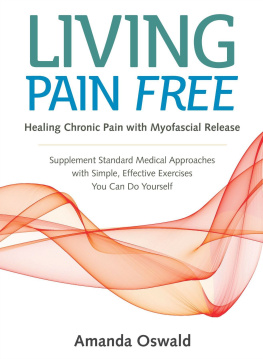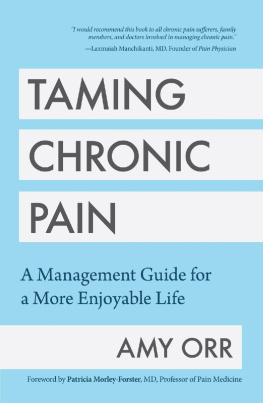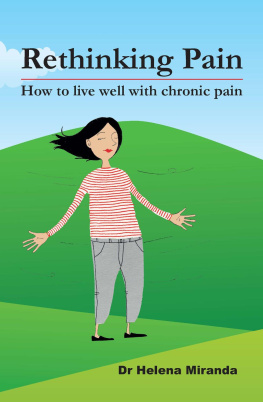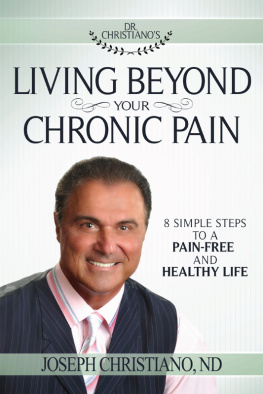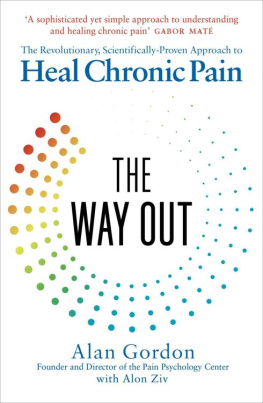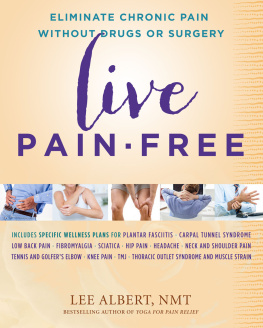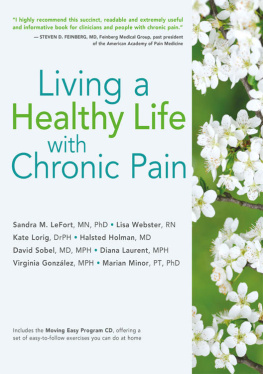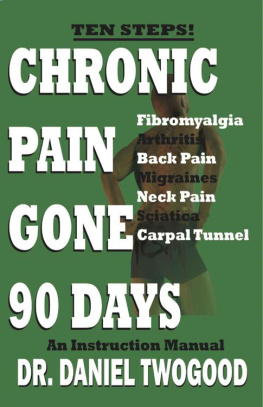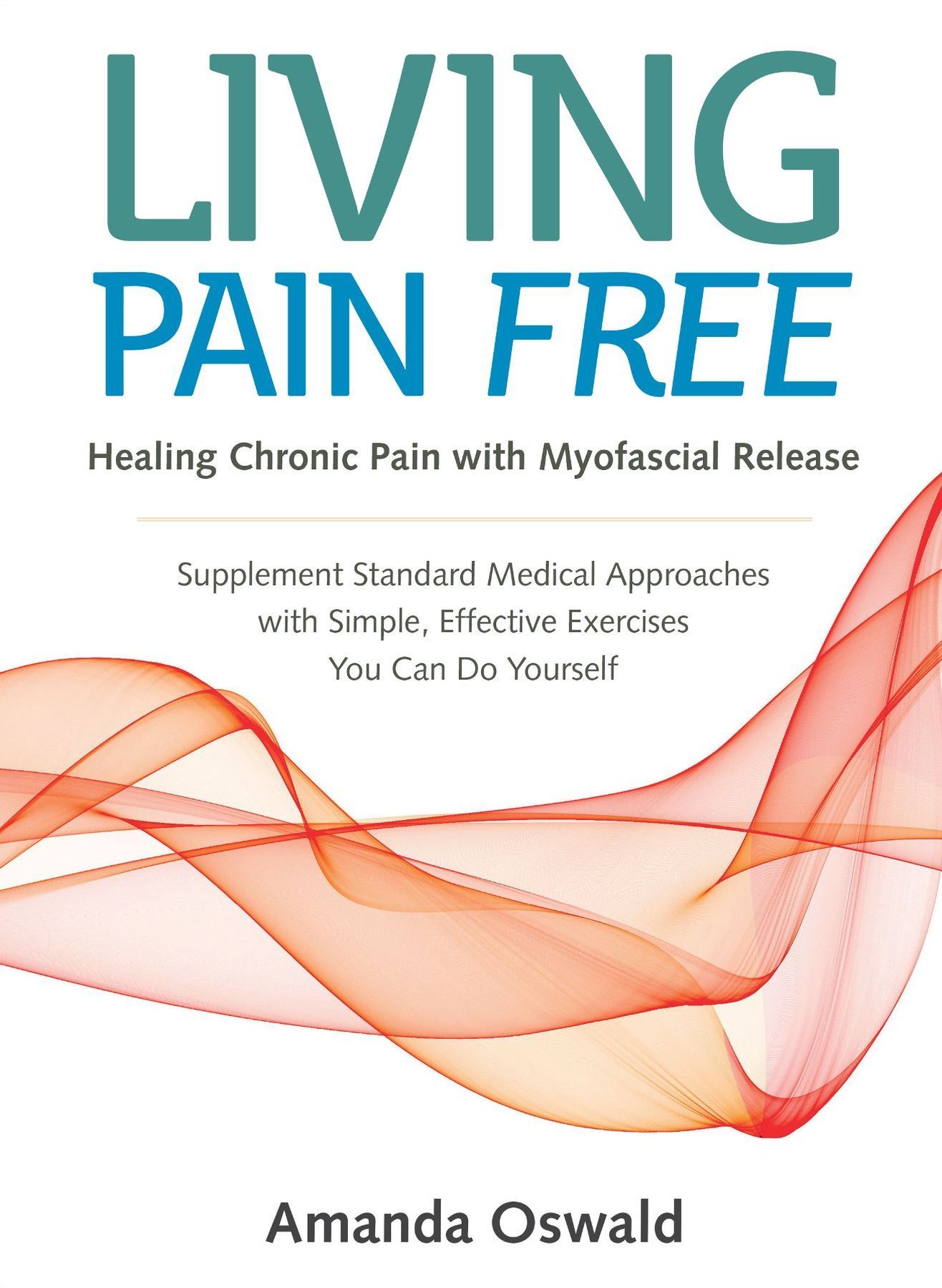
Living Pain Free
Living Pain Free
Healing Chronic Pain with Myofascial Release
A Self-Help Guide
Amanda Oswald

Chichester, England

North Atlantic Books
Berkeley, California
Copyright 2018 by Amanda Oswald. All rights reserved. No portion of this book, except for brief review, may be reproduced, stored in a retrieval system, or transmitted in any form or by any meanselectronic, mechanical, photocopying, recording, or otherwisewithout the written permission of the publisher. For information, contact Lotus Publishing or North Atlantic Books.
First published in 2018 by
Lotus Publishing
Apple Tree Cottage, Inlands Road, Nutbourne, Chichester, PO18 8RJ and
North Atlantic Books
Berkeley, California
All Drawings Matt Lambert
Cover Design Jasmine Hromjak
Living Pain Free: Healing Chronic Pain with Myofascial Release is sponsored and published by the Society for the Study of Native Arts and Sciences (dba North Atlantic Books), an educational nonprofit based in Berkeley, California, that collaborates with partners to develop cross-cultural perspectives, nurture holistic views of art, science, the humanities, and healing, and seed personal and global transformation by publishing work on the relationship of body, spirit, and nature.
North Atlantic Books publications are available through most bookstores. For further information, visit our website at www.northatlanticbooks.com or call 800-733-3000.
British Library Cataloguing-in-Publication Data
A CIP record for this book is available from the British Library
ISBN 978 1 905367 81 8 (Lotus Publishing)
ISBN 978 1 62317 207 7 (North Atlantic Books)
Library of Congress Cataloging-in-Publication Data
Names: Oswald, Amanda, 1960 author.
Title: Living pain free : healing chronic pain with myofascial release / Amanda Oswald.
Description: Berkeley, California : North Atlantic Books, [2018]
Identifiers: LCCN 2017019417 (print) | LCCN 2017027741 (ebook) | ISBN 9781623172084 | ISBN 9781623172077 (trade paper)
Subjects: LCSH: Chronic pain--Treatment. | Massage therapy.
Classification: LCC RB127 (ebook) | LCC RB127 .O835 2018 (print) | DDC 616/.0472--dc23
LC record available at https://lccn.loc.gov/2017019417
Contents
For Kahn
This book has been a long time in the making. Over many years I have subjected my nearest and dearest to my thoughts on fascia and chronic pain, so I would like to thank them for listening with varying degrees of patience, and for providing me with the necessary push in the right direction to actually gather those ideas into a book. I would also like to thank Jon and his team at Lotus Publishing for their patient guidance, and Emily and the team at North Atlantic Books for their unfailing enthusiasm for this project. Thanks also to Kieran and Lyz Igwe at Diligent Fitness, Leeds for the loan of themselves as photo models.
Fascia has long been the forgotten tissue in the body, discarded by medical students as the white stuff so they can get to the more interesting structures underneath such as muscles and bones. This disregard for fascia has arisen from a lack of understanding of the nature of the tissue, which often appears less uniform and more disorganised than other more easily identifiable structures such as muscles and organs.
Added to this, it is only recently that science has developed the tools with which to recognise and measure fascia. Even diagnostic tools such as X-Rays and MRI scans did not show this tissue adequately. However, more recent advances in ultrasound technology mean that it is now possible to identify the many differentiations in fascia in detail, from the tough ligaments and tendons, to the more fluid connective components.
Now scientists are beginning to be able to research what manual therapists have felt under their hands for centuries. And the field of fascia research is rapidly becoming an area of interest for many disparate disciplines, from scar treatment, surgery and rehabilitative medicine, to movement therapies and sports science.
The new terminology proposed for functional descriptions at the first Fascia Research Congress in 2007 defines fascia as all collagenous fibrous connective tissues that can be seen as elements of a body-wide tensional force transmission network.
The fascia is shaped and structured by the tensional forces placed upon it, which mean that it can be either tough and strong such as a ligament, or fluid and flowing such as loose membrane. Despite the names assigned to the different body structures by traditional anatomy, in the fascial world it is impossible to make clear distinctions or definitions between the fascia as it merges from muscle into sheath, into tendon and bone.
Force transmission too is no longer seen as something that happens between muscles as they contract and stretch to move bones. From a fascial perspective, a major portion of the muscular force is transmitted through the fascia surrounding these structures. This difference in perspective allows for the wider transmission of force throughout the body, instead of just a locally occurring event.
Fascia is also recognised as a tensegrity structure, a concept that served as a basic inspiration for the field of fascia research. Taken from arts and architecture, tensegrity structures are where the solid compressional elements are held in balance yet without touching each other, by the elastic tensional elements that are all connected to each other in a global tension-transmitting network.
In the body this translates into the bones being held in balance by the fascia, rather than the classical weight-bearing structure of the skeleton, as proposed in traditional anatomy.
There is much research interest into the load bearing implications of fascia when seen as a tensegrity structure. The fascial network adapts to the load bearing demands made on it, including the force of gravity which has evolved as humans have stood up and become bipeds. We now have specially adapted fascia on the outside of our thighs which enables us to stabilise our hips in walking, running and hopping. No other animal, not even our closest relative the chimpanzee, shows this kind of fascial feature. And even this feature adapts to use. For example, a runner or regular walker will develop stronger fascia on the outside of their thighs, compared with a horse rider whose inner thighs will become stronger with the demands of their sport, and compared with a paraplegic wheelchair user where the lack of use means any fascial strength disappears in their thighs.
These findings are of particular interest in the field of sports science and sports education, particularly with the rapidly advancing research into the ability of fascia to store and release kinetic energy. Put simply, correctly trained fascia has a greater ability to become more elastic, springy and resilient, leading to improved athletic performance and movement capability, while reducing the likelihood of injury.
What does all of this mean for the layperson, the general public?
Just as fascia can respond to sports training by adapting positively to sports-specific needs, so can it respond negatively to the ab-use of modern office life, a sedentary lifestyle and high stress.
Next page
